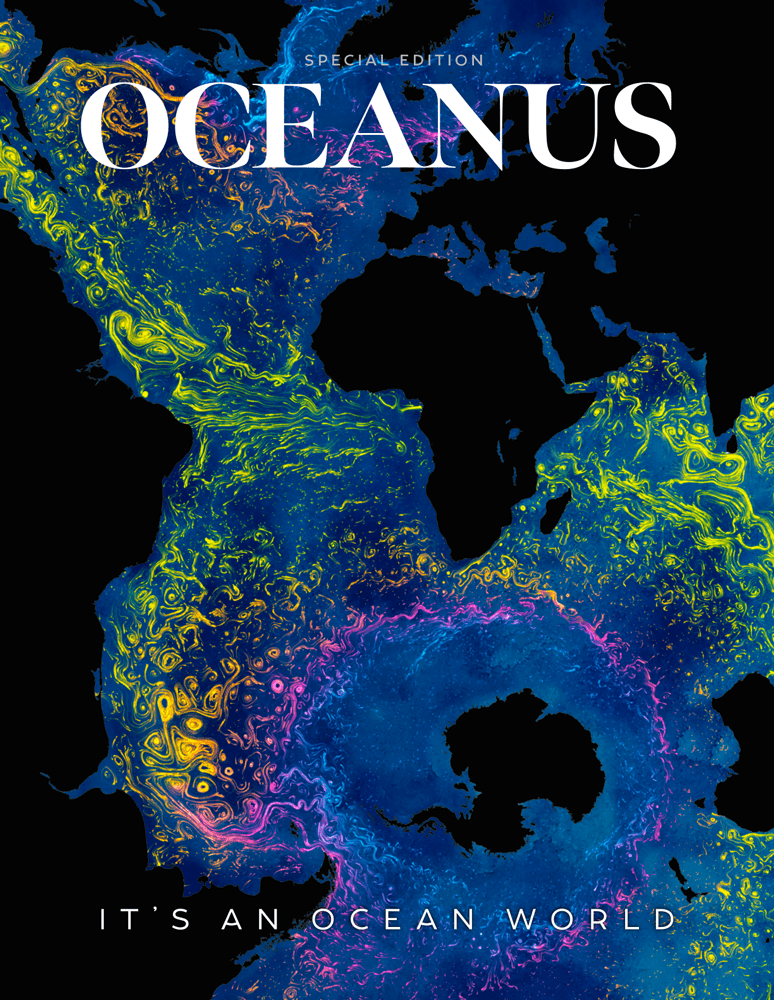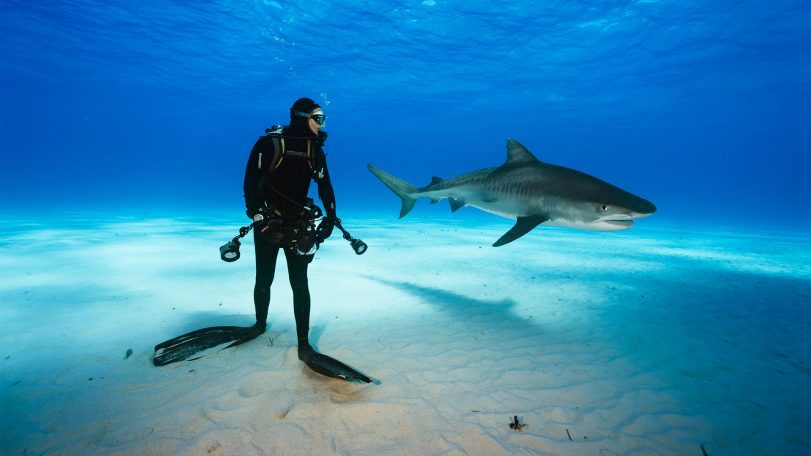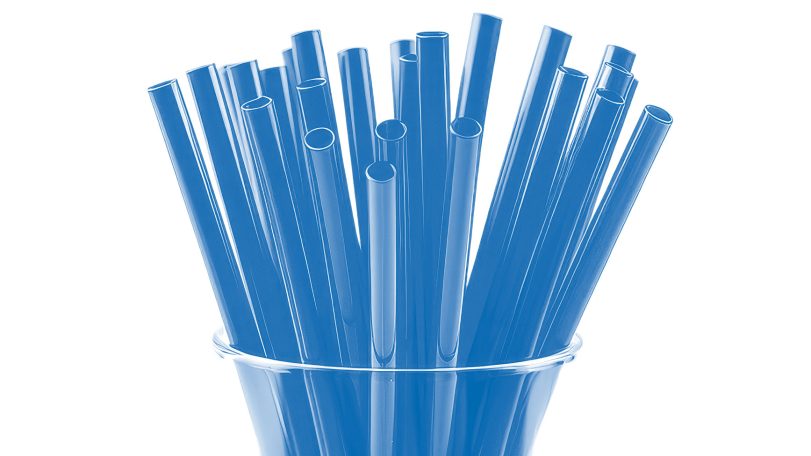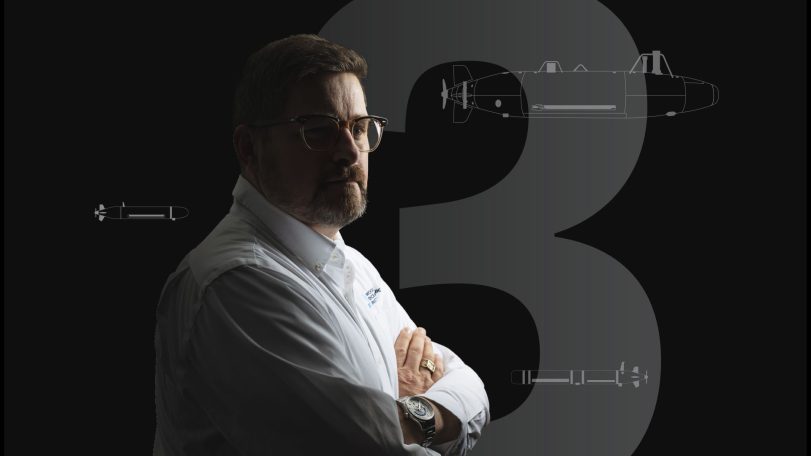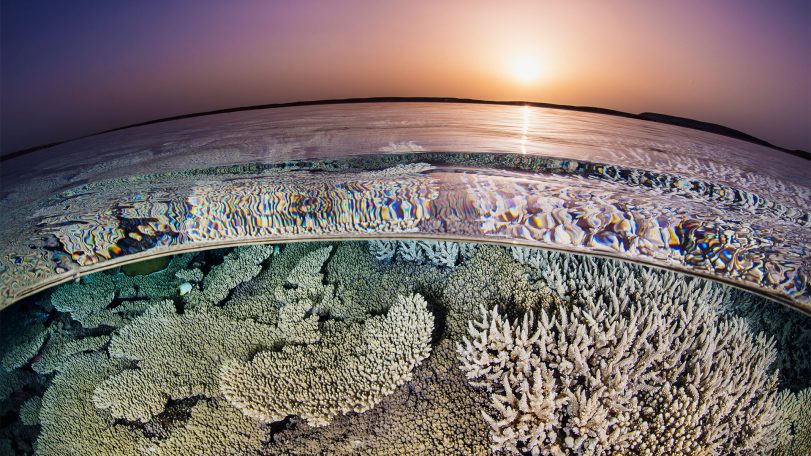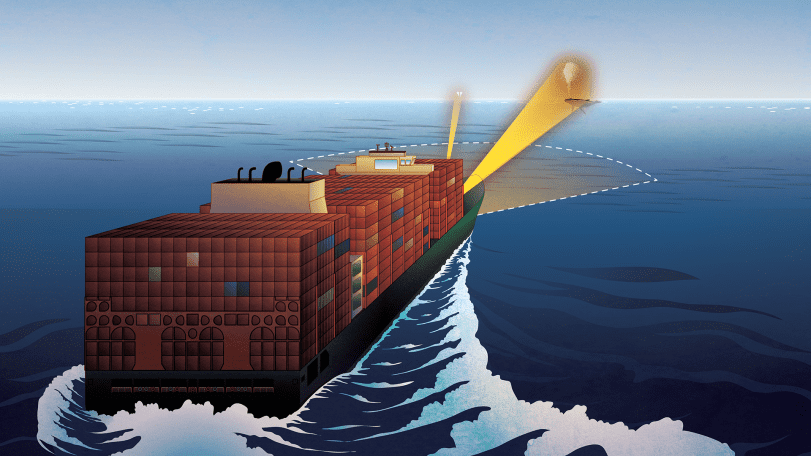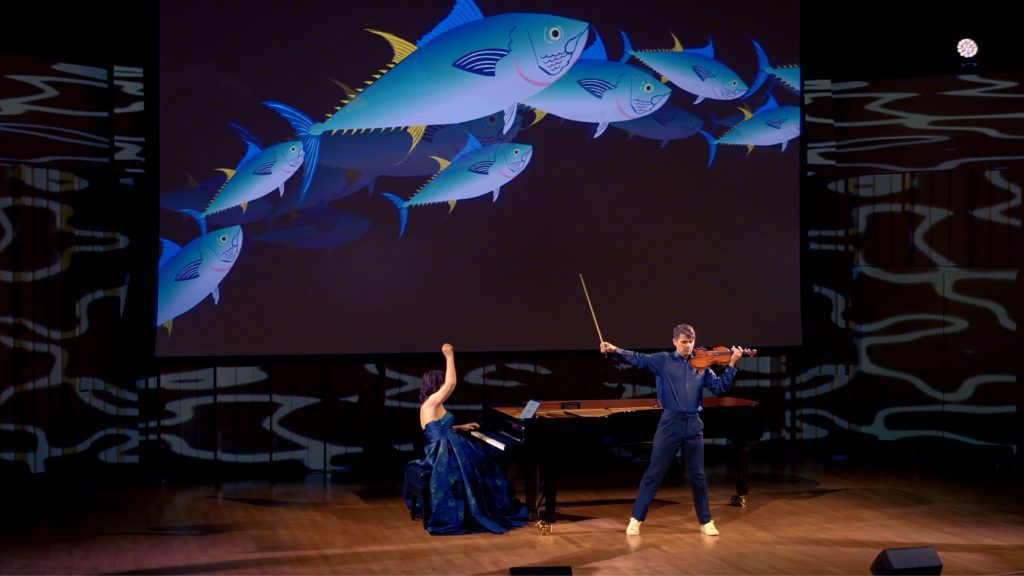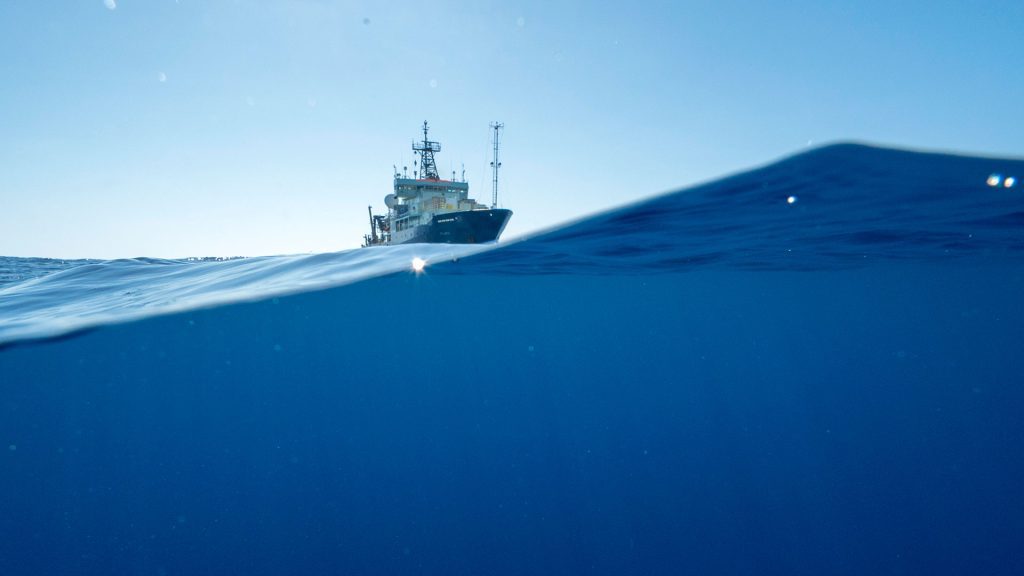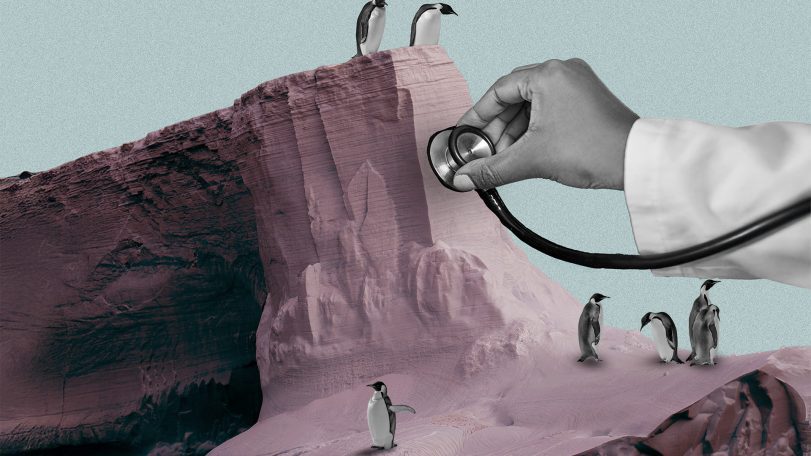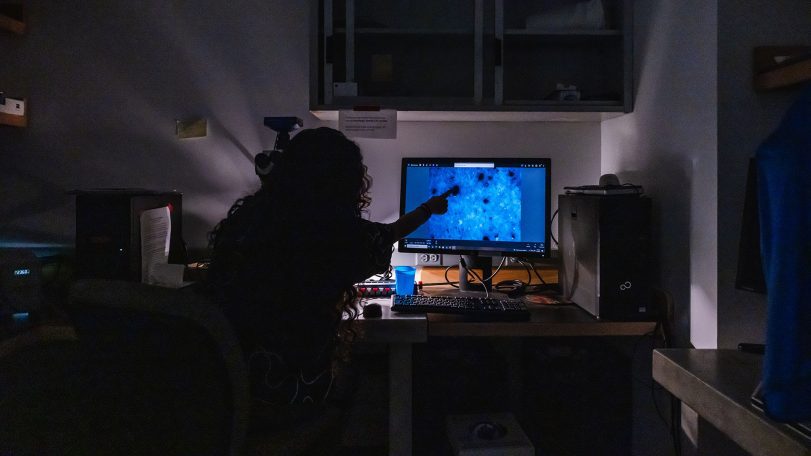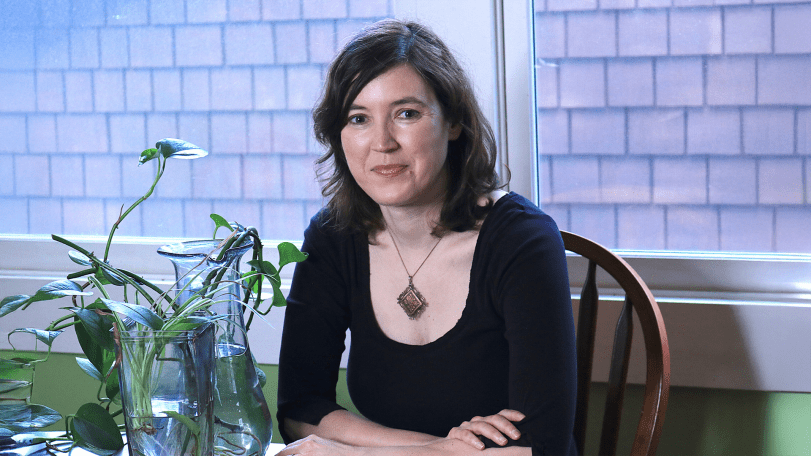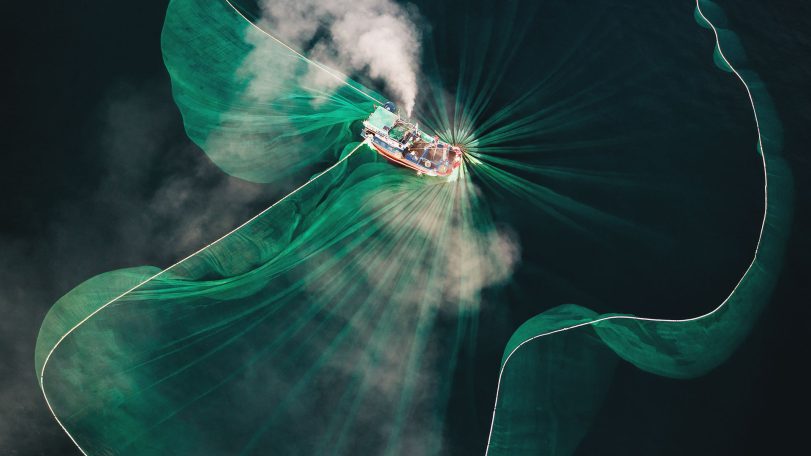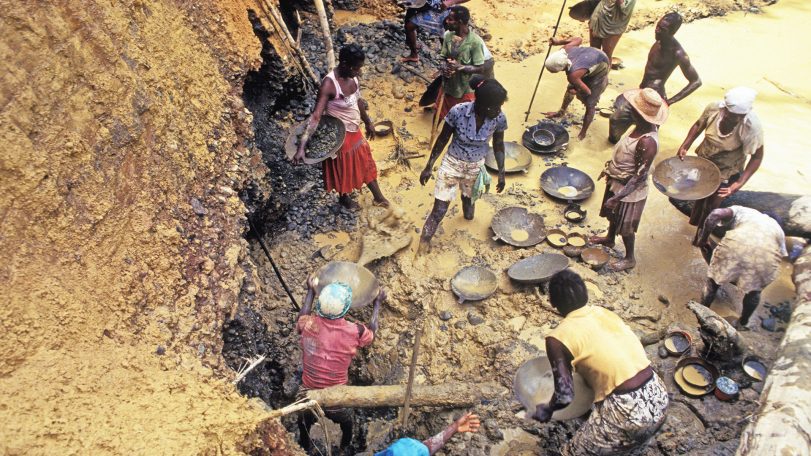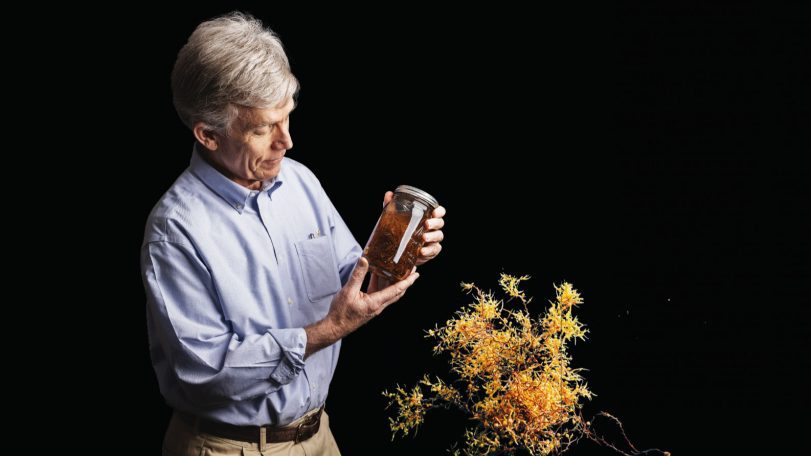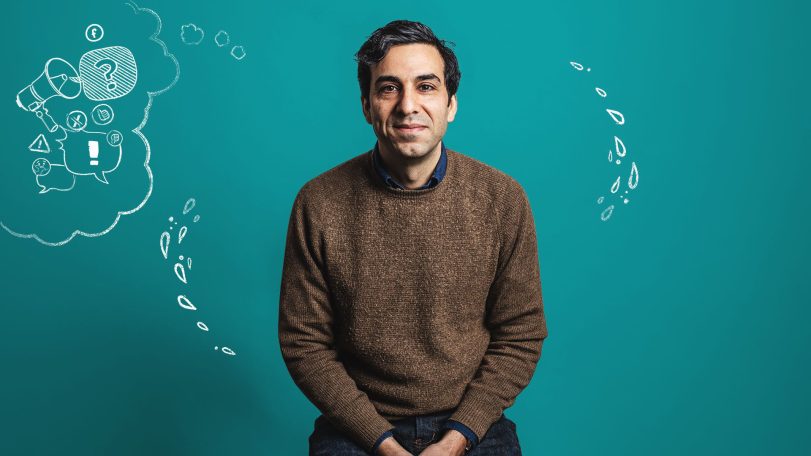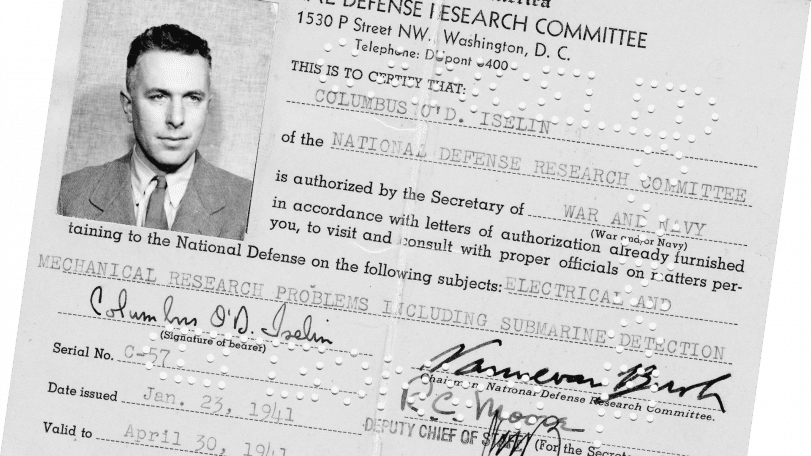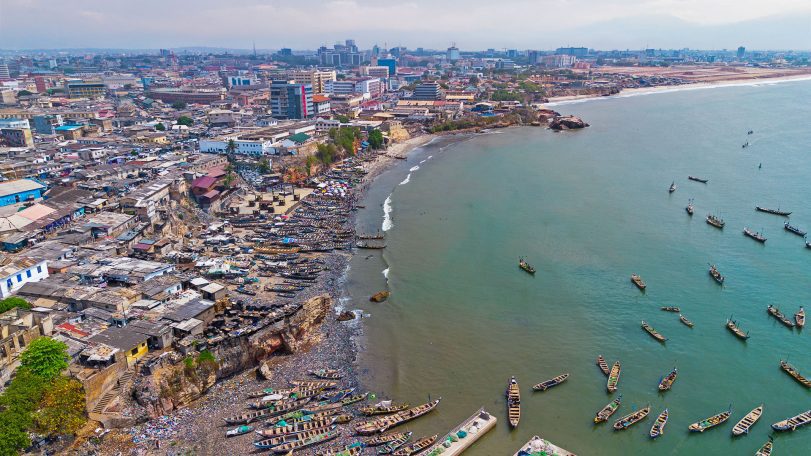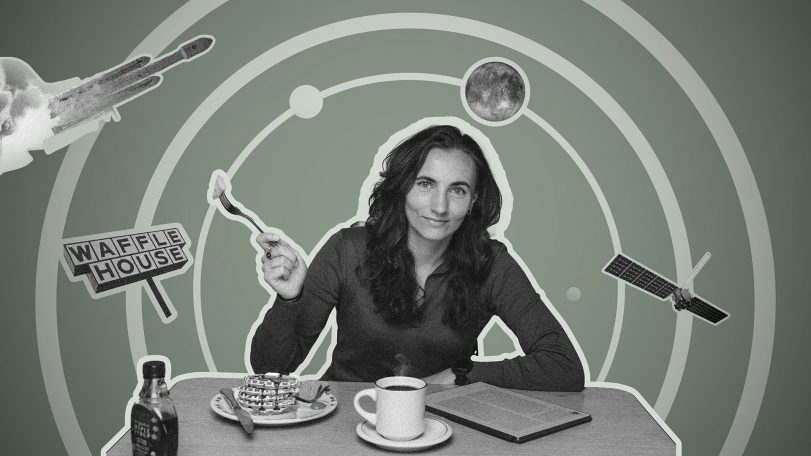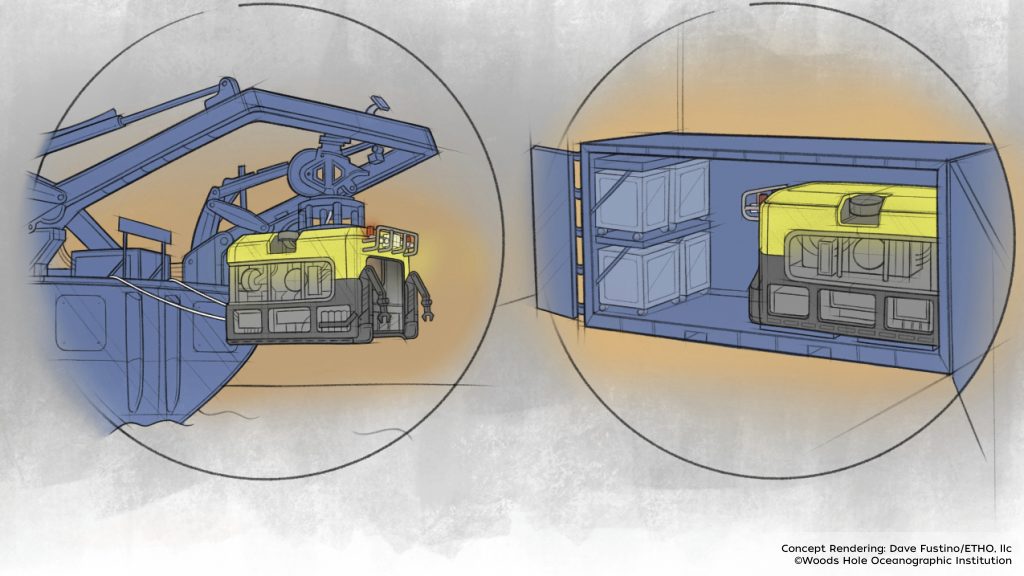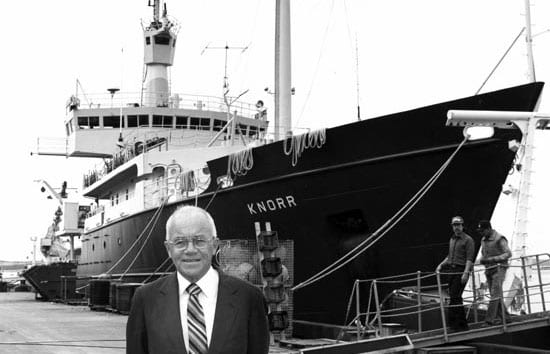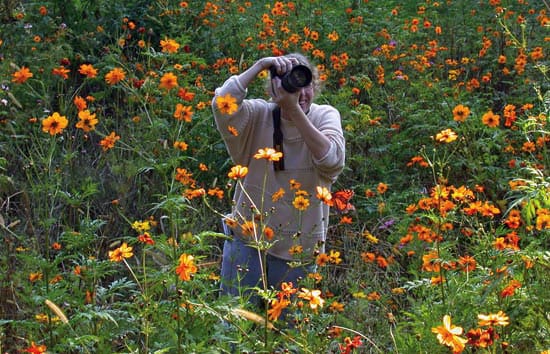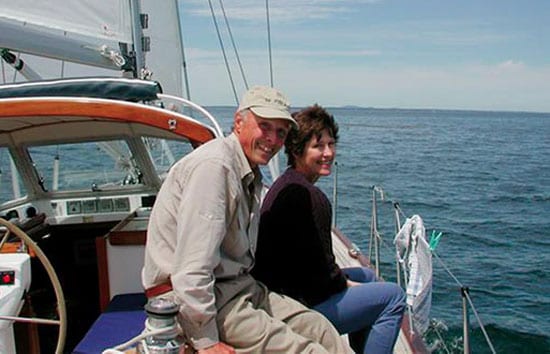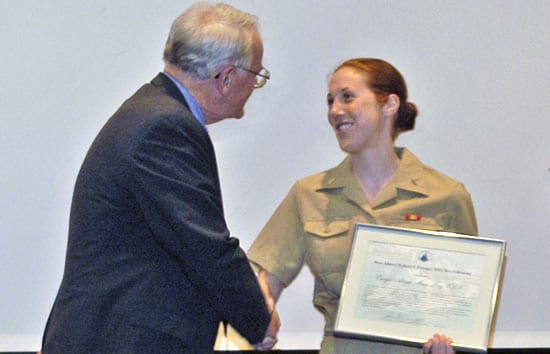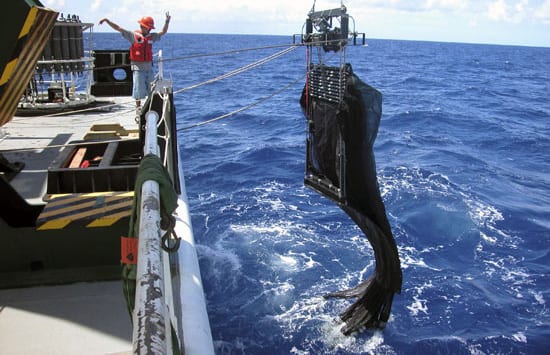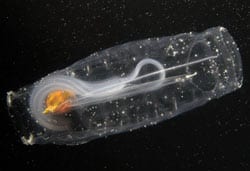
The Ocean (Re)Imagined
How expanding our view of the ocean can unlock new possibilities for life
Lessons from a lifetime of exploration
Award-winning ocean photographer Brian Skerry shares insights from a career spent around ocean life and science
The ocean weather nexus, explained
The vital role of ocean observations in extreme weather forecasting
Breaking down plastics together
Through a surprising and successful partnership, WHOI and Eastman scientists are reinventing what we throw away
Three questions with Carl Hartsfield
Captain Hartsfield, USN retired, discusses the role ocean science plays in our national defense

and get Oceanus delivered to your door twice a year as well as supporting WHOI's mission to further ocean science.
Our Ocean. Our Planet. Our Future.
Body snatchers are on the hunt for mud crabs
WHOI biologist Carolyn Tepolt discusses the biological arms race between a parasite and its host
A polar stethoscope
Could the sounds of Antarctica’s ice be a new bellwether for ecosystem health in the South Pole?
Secrets from the blue mud
Microbes survive—and thrive—in caustic fluids venting from the seafloor
Top 5 ocean hitchhikers
As humans traveled and traded across the globe, they became unwitting taxis to marine colonizers
Following the Polar Code
Crew of R/V Neil Armstrong renew their commitment to Arctic science with advanced polar training
Harnessing the ocean to power transportation
WHOI scientists are part of a team working to turn seaweed into biofuel
Casting a wider net
The future of a time-honored fishing tradition in Vietnam, through the eyes of award-winning photographer Thien Nguyen Noc
Gold mining’s toxic legacy
Mercury pollution in Colombia’s Amazon threatens the Indigenous way of life
How do you solve a problem like Sargassum?
An important yet prolific seaweed with massive blooms worries scientists
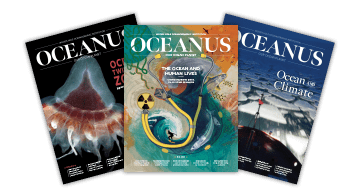
Looking for something specific?
We can help you with that. Check out our extensive conglomeration of ocean information.
Ancient seas, future insights
WHOI scientists study the paleo record to understand how the ocean will look in a warmer climate
Rising tides, resilient spirits
As surrounding seas surge, a coastal village prepares for what lies ahead
Whistle! Chirp! Squeak! What does it mean?
Avatar Alliance Foundation donation helps WHOI researcher decode dolphin communication
We can’t do this alone
For marine chemist Adam Subhas, ocean-climate solutions don’t happen without community
How WHOI helped win World War II
Key innovations that cemented ocean science’s role in national defense
Life at the margins
Scientists investigate the connections between Ghana’s land, air, sea and blue economy through the Ocean Margins Initiative
Grits, storms, and cosmic patience
As storms stall liftoff, Europa Clipper Mission Team member Elizabeth Spiers patiently awaits the biggest mission of her life
New underwater vehicles in development at WHOI
New vehicles will be modeled after WHOI’s iconic remotely operated vehicle, Jason
Seafloor Reconnaissance Reveals Hidden Dangers Off Antarctica
For five frigid weeks in April and May 2005, a team of scientists and engineers…
Guy Nichols: Transforming Institutions
Guy Nichols never shied away from tough jobs. And he never lost sight of the fact that an organization needs all its people, not just those at the top.
Remembering a Scientist/Student/Artist
Celeste Fowler joined the MIT/WHOI Joint Program (JP) in June 2003 and quickly made her presence felt.
WHOI Associates Have a New President
In May 2005, Carl Peterson was named president of the WHOI Associates, whose membership supports research at WHOI.
Newest Alvin Pilot Comes Aboard
Gavin Eppard became WHOI?s newest Alvin pilot on March 21, 2005.
Pittenger Fellowship Awarded to Naval Graduate Student
WHOI presented its first Rear Admiral Richard F. Pittenger Fellowship in March to Ensign Allison Berg, a master’s degree candidate in the MIT/WHOI Joint Program.
Hart Elected to American Academy of Arts and Sciences
Senior Scientist Stanley Hart of the WHOI Geology and Geophysics Department has been elected a Fellow of the American Academy of Arts and Sciences, one of the oldest learned societies in the nation.
On the Seafloor, a Parade of Roses
Third generation of scientists finds third generation of hydrothermal vent sites.
From Ancient Roman Omens, New Data on Solar Activity
Because aurorae, comets, and meteors were omens, the Romans and other ancient peoples observed the sky fastidiously, recording heavenly observations alongside detailed accounts of earthly events and military triumphs. Twenty centuries later, those historical records have become scientific data for researchers such as WHOI Senior Scientist Andy Solow.
Oceanographic Telecommuting
‘Virtual’ chief scientist directs a research cruise without leaving land.
Checking the Forecast for ‘Marine Snow’
The “rain” of tiny particles from sunlit surface waters to the deep ocean could play a key role in understanding global warming.
Transparent Salps May Play Conspicuous Ecological Role
WHOI biologist Larry Madin led an expedition to waters off Antartica to learn about little-known gelatinous animals.
